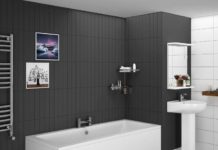For any optical system, windows play an integral role both in relation to reducing reflection and expanding transmission. It also functions to safeguard electronic sensors and overall optical systems against environmental elements that they are exposed to or come in contact with.
If the environmental conditions of certain applications are extremely harsh then it is necessary to upgrade the optical windows. This implies that there is a need to select a perfect material that can withstand the nature of such a harsh environment. The material requires to be robust.
Well, there is only one solution for it and that is Sapphire Window. While there are other materials available for use such as fused silica or glass, nothing beats the exceptional characteristics of sapphire material. If we look at some obvious points why sapphire windows are the best then we can say that it’s because they are extremely sturdy, scratch resistant, less long term costs involved, wide spectral range and more.
Keep reading till the end to find out more about sapphire windows and why they are considered to be the best choice.
Sapphire Windows
Sapphire is an extremely durable crystal material which is widely used for optical windows and other applications. This material is considered to be strongest and second only to diamond in account to ratings for hardest natural substances.
Optical components that are manufactured from sapphire material are known for its outstanding functionality and lasts longer than other materials such as quartz or fused silica. They are also renowned for exceptional transmission range that makes them the best material choice.
Benefits of Sapphire Window
Sapphire offers high mechanical strength compared to other optical materials. The melting point for materials like Glass is at 1400°C, however, Sapphire stays sturdy and useful at such temperature conveniently.
In fact, Sapphire can be easily used for applications up to a temperature of 1800°C or even mildly greater than that. Other than that, sapphire windows are also resistant to a wide range of chemicals. Only a few very strong chemicals with hot caustics can cause an impact on sapphire. Such chemicals can etch or eventually damage the polished optical surface made of sapphire.
Sapphire windows also have properties for excellent thermal conduction. They are extremely strong and durable as sapphire has an impressive rating of 9 in Mohs hardness scale. It is only one point less than diamond.
Because of its sturdiness and robust performance over any other material, sapphire windows are expensive, however, the long-term cost of this material is comparatively reasonable. Since sapphire can withstand harsh conditions and perform unfalteringly, they are durable and require no replacement.
Whereas for other material made optical windows, replacement may be required due to hindering performance and your long-term cost goes up. Sapphire windows are reasonably priced for their sturdy property.
Additionally, sapphire windows also have an incredibly wide optical transmission band which ranges from UV to the mid-IR. None of the other materials cover the same transmission spectrum as sapphire material. For instance, a standard Glass windows transmission ranges between 375nm-2900nm.
However, a sapphire windows optical transmission ranges from 190 nm to 5000 nm. That is almost from the ultraviolet to mid infrared. Without the application of any anti-reflective coatings of anti-reflective, a sapphire window transmits most of this range through at the rate of 86 percent.
For applications that require minimal transmission yet able to withstand harsh conditions, experts recommend a coating standard AR coating on the inner face of the sapphire surface. This technique can even amplify the overall transmission rate to more than 86 percent to as high as 92 percent.
Usage of Sapphire Windows
Sapphire windows are ideally used for applications where high temperature, high thermal loads, high pressure, low friction, scratches are common. Applications such as gas and oil analysis, furnace viewports, IR analytical devices, etc. suitably use sapphire window optical.
To learn more about sapphire windows, make sure to consult an expert.










